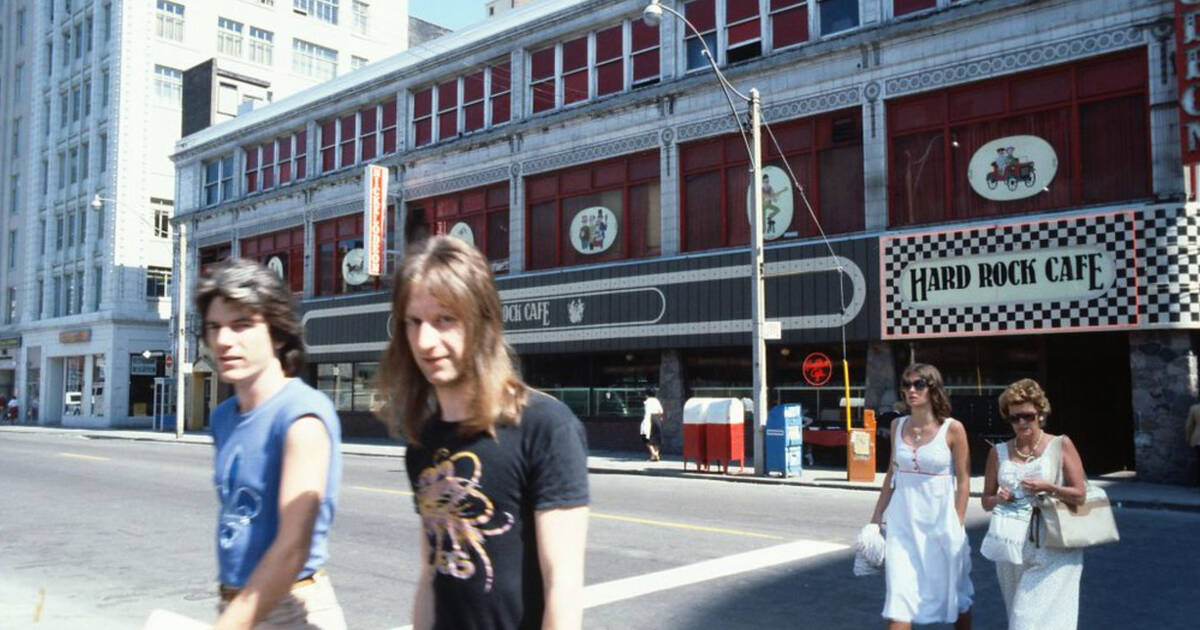
If you asked the average Toronto resident to nominate the most touristy intersection in the city, most would select Yonge and Dundas.
As a central access point to the Eaton Centre and home to one of the city's largest public gathering spots, in non-COVID times it draws huge numbers of visitors for its Time Square-ish vibe, but it'd be difficult to track down many locals who are passionate about the place.
Yonge and Dundas may bustle with activity, but it feels corporate, sanitized and highly regulated.
Much of this has to do with the presence of 10 Dundas East, the unfortunate and bland structure that towers over the northeast corner of the intersection.
It opened in 2007 (as Toronto Life Square), but the previous buildings were demolished about a decade earlier to pave way for the development.
The adjacent square arrived earlier in the decade, opening in 2002. There was about a five-year period when the east side of the intersection was almost barren on account of these two construction projects, which would forever change the character of the city.
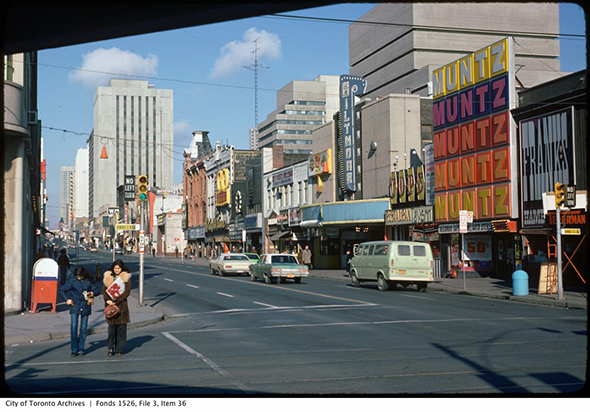
Yonge and Dundas, once the heart of seedy Toronto, was officially cleaned up by the time the square opened. This, of course, was the plan. For years, the city had been looking for a way to revitalize Lower Yonge St. and by 1998 the public square was the centrepiece of the project.
The buildings that were ultimately demolished to pave way for modern day Yonge and Dundas aren't much worth mourning.
The southeast corner was home to the World's Biggest Jean Store, while the northeast side hosted a currency exchange and pawn shop. Something has, however, been lost in the transformation of the place.
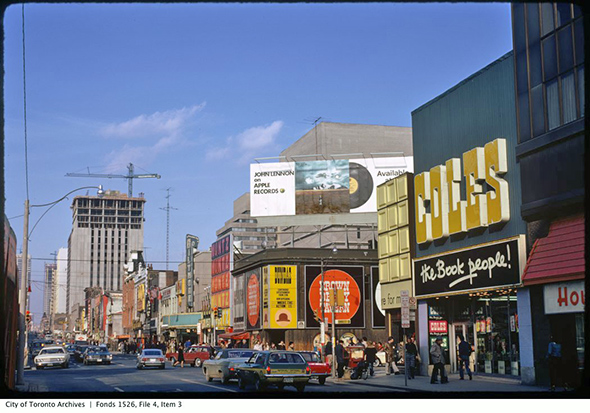
You have to rewind back to the 1970s to get a sense of what Yonge and Dundas was like in its heyday.
At this time, the northeast corner was home to the Brown Derby Tavern, which opened in 1949 and was a mainstay at the intersection. A far cry from Jack Astor's, the Derby was a rough-around-the-edges Toronto institution.
In other words, it wasn't a tourist trap. Yonge and Dundas wasn't just a shopping destination; it was a place you could drink. Even the now shuttered Hard Rock Cafe, which opened a block south in 1978 (four years after the Derby closed), was a vibrant place back then.
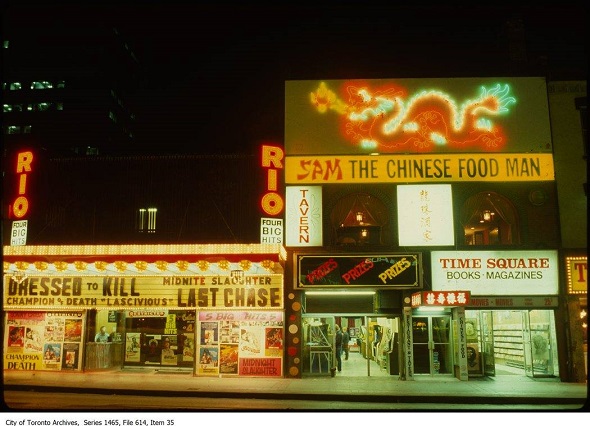
The whole strip of Yonge St. was focused on a more adult brand of entertainment during this period, be that cocktails, live music or lap dances.
Closer to Queen St., the Colonial Tavern was the place to listen to jazz, while north of Dundas you could eat indulge in greasy spoon eats at Tops or late night noodles at Sam the Chinese Food Man.
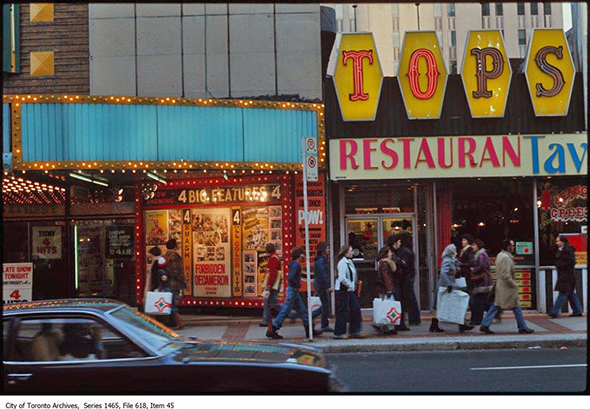
The area was still broadly touristy, but that wasn't its raison d'etre in the 1970s. On the contrary, even through the 1980s you went here to get a dose of gritty Toronto, to expose yourself to the energy that was always pulsing through this corridor of Yonge St.
The shocking death of Emanuel Jaques in 1977 was the first occasion that led to major calls to clean up the street.
People might have tolerated and even liked some of the seediness on Yonge St., but the brutality of the rape and murder of Jaques was a sign that the street had gotten out of control.
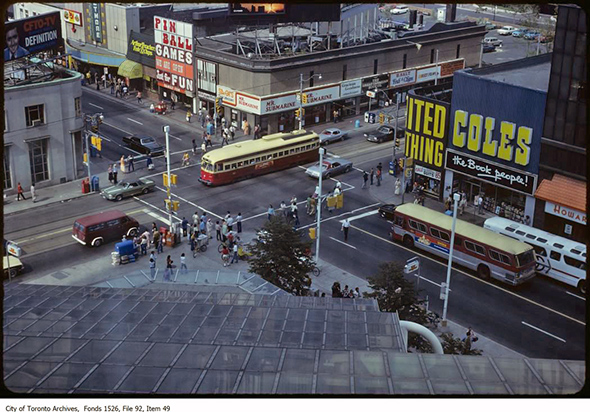
In the years that followed, this section of Yonge St. gradually became more retail-focused. The theatres closed, the taverns shut their doors, and in came a mix of hodgepodge mom and pop retail.
Mr. Sub occupied the old Brown Derby spot through the 1980s, while Coles Book Store had the southeast corner from the late '70s through the '80s.
This was a transitional period, and one which witnessed the area transform to cater to younger people. The arcades blossomed, the head shops proliferated, and the record stores enjoyed a resurgence at Yonge and Gould.
Yonge and Dundas was still cool in the 1980s. Uptown kids would flock down after school to loiter and play games. The Eaton Centre showed cheap movies at the Cineplex, and Lime Rickey's was about as hip as Toronto restaurants got.
The changes through the 1990s were gradual until the city of Toronto appropriated the land for the Yonge-Dundas Square and 10 Dundas East. All of sudden, the whole east side of the intersection was just gone.
By the time the 2000s rolled around most people were happy to see the construction on these projects finally conclude, but it was apparent that Yonge St. was a very different place.
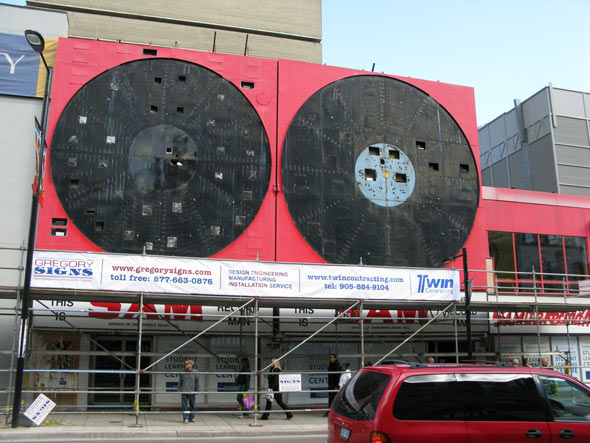
Sam the Record Man closed in 2007, the same year that 10 Dundas East opened. In some sense this is a coincidence. The old record shop was bound to close at some point, but the alignment of these two events is telling of the current state of Yonge and Dundas.
The intersection is still vibrant, marked by street performers and the occasional protest at Yonge-Dundas Square, but somewhere along the way it lost its soul.
Perhaps it happened on that fateful night in 1977. Or perhaps it was 2007. In any case, over those 30 years, everything changed.
by Derek Flack via blogTO

No comments:
Post a Comment